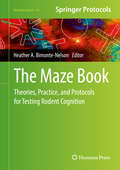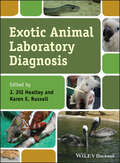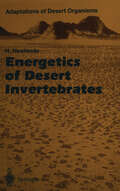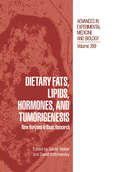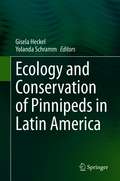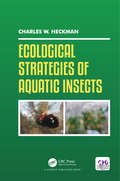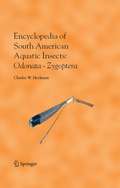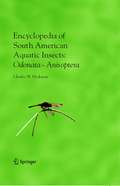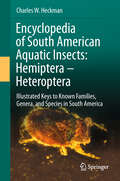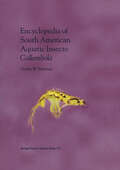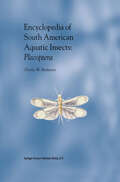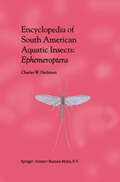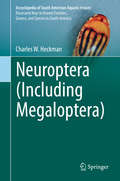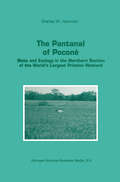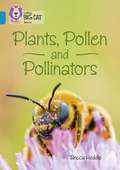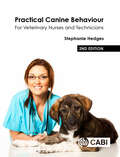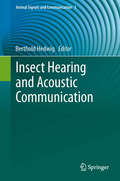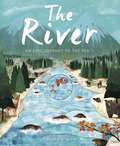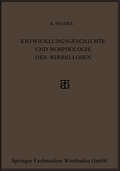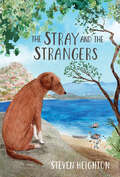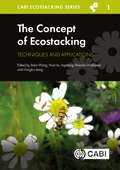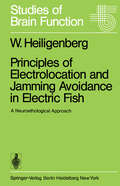- Table View
- List View
The Maze Book: Theories, Practice, and Protocols for Testing Rodent Cognition (Neuromethods #94)
by Heather A. Bimonte-NelsonThis vibrant collection delivers a laboratory roadmap of testing cognition in the rodent. While rodents and mazes are the main center and focus of this book, many aspects in the field of learning and memory are discussed and detailed, spanning from the molecular to the human, with every chapter delivering a comprehensive review of historical milestones in order to provide context for past discoveries, new findings, and future studies. Didactic foundations, operational definitions, and theory, as well as practical experimental and apparatus set-up, data analysis, and interpretation instructions are included in the first part of the book, while part two contains step-by-step protocols, troubleshooting, and tips from experts in the field.Authoritative and inspirational, The Maze Book: Theories, Practice, and Protocols for Testing Rodent Cognition serves as a detailed and practical manual for scientists wishing to implement these tools in their laboratories and for scholars interested in this powerful field.
Exotic Animal Laboratory Diagnosis
by J. Jill Heatley Karen E. RussellExotic Animal Laboratory Diagnosis is a practical, user-friendly guide to diagnostic testing in a wide range of exotic species. Offers complete information on obtaining samples, performing tests, and interpreting laboratory results in exotic animals Presents information on each species using a similar format for easy access Emphasizes details on clinical biochemistries, urinalysis, and common laboratory diagnostic tests not found in other resources Draws together information on selecting, performing, and using diagnostic tests into a single easy-to-use resource Covers a wide range of species, including small mammals, primates, reptiles, aquatic animals, and wild, laboratory, and pet birds
Exotic Animal Laboratory Diagnosis
by J. Jill Heatley Karen E. RussellExotic Animal Laboratory Diagnosis is a practical, user-friendly guide to diagnostic testing in a wide range of exotic species. Offers complete information on obtaining samples, performing tests, and interpreting laboratory results in exotic animals Presents information on each species using a similar format for easy access Emphasizes details on clinical biochemistries, urinalysis, and common laboratory diagnostic tests not found in other resources Draws together information on selecting, performing, and using diagnostic tests into a single easy-to-use resource Covers a wide range of species, including small mammals, primates, reptiles, aquatic animals, and wild, laboratory, and pet birds
Energetics of Desert Invertebrates (Adaptations of Desert Organisms)
by Harold HeatwoleDesert invertebrates live in an environment where resources alternate unpredictably between brief periods of plenty and prolonged scarcity. This book describes the adaptive strategies of desert invertebrates in acquiring energy and sustaining life with such fluctuations. Some cooperate in foraging; others compete for resources. Some are nomadic and migrate to more favorable sites as conditions change. Others conserve energy by going into a deep dormancy until better conditions return. Still others store food during plentiful periods so as to retreat underground during less favorable times. The adaptive modes of economizing on scarce energy resources are diverse and lead to an appreciation of the intricate interactions of animals living close to their environmental limits.
Dietary Fats, Lipids, Hormones, and Tumorigenesis: New Horizons in Basic Research (Advances in Experimental Medicine and Biology #399)
by David HeberThis book was inspired by a gatheringofscientists in Los Angeles in 1994 under the auspices of the UCLA Clinical Nutrition Research Unit which is funded by the National Cancer Institute to promote new research into nutrition and cancer prevention. This unit supports research integrating basic and metabolic/clinical investigations which examine observations from epidemiologic studies and their application to the prevention ofcommon forms ofcancer through nutritional intervention. There is a great deal ofinformation from epidemiologic, experimental and metabolic studies implicating elements ofthe diet as important in the development and progression of common forms ofcancer including breast cancer, colon cancer, prostate cancer, and uterine cancer. When these forms ofcancerareexaminedcarefully, it isclearthat they share anumber ofcommon etiologic factors related to dietary fat, lipids, and hormones. A human cancer is usually discovered at a point where it has formed a detectable mass. For many forms of cancer, this may require 10 to 15 years from the time when the cancer is first initiated. Nutritional efforts at prevention may delay the progression ofcancer to a detectable mass resulting in reduced incidence and may retard the clinical progression and metastatic spread ofcancer after its primary treatment.
Ecology and Conservation of Pinnipeds in Latin America
by Gisela Heckel Yolanda SchrammPinnipeds are marine mammals that include eared seals, true seals, and walruses. This book presents detailed reviews on the ecology and conservation of 10 pinniped species along the coasts and islands in Latin America, from Mexico to Chile and Argentina. Topics covered include their population dynamics, trophic ecology, reproduction, and behavior. In addition, the book addresses major conservation issues regarding climate change, interaction with fisheries, ecotourism, and other human activities.
Ecological Strategies of Aquatic Insects
by Charles W. HeckmanThis book recounts the habits of many interesting and unusual exceptions to the rule that insects are typically terrestrial forms of life. It examines the different ways that groups of species have developed modes of existence in or on the surface of water, and gives reasons why the gross morphology of insects is not favorable for life in or near bodies of water, such as wings that fail to function after coming into contact with water, rendering them useless.
Ecological Strategies of Aquatic Insects
by Charles W. HeckmanThis book recounts the habits of many interesting and unusual exceptions to the rule that insects are typically terrestrial forms of life. It examines the different ways that groups of species have developed modes of existence in or on the surface of water, and gives reasons why the gross morphology of insects is not favorable for life in or near bodies of water, such as wings that fail to function after coming into contact with water, rendering them useless.
Encyclopedia of South American Aquatic Insects: Illustrated Keys to Known Families, Genera, and Species in South America (Encyclopedia of South American Aquatic Insects)
by Charles W. HeckmanThis beautiful volume, with hundreds of fascinating hand-drawn illustrations, completes the two-volume work on the order Odonata in the Encyclopedia of South American Aquatic Insects. The Zygoptera volume encompasses the small dragonflies often called damselflies. The sections on the morphology of the adults and larvae are followed by discussions of factors influencing their distribution and instructions on the methods used to observe, collect, preserve, and examine specimens.
Encyclopedia of South American Aquatic Insects: Illustrated Keys to Known Families, Genera, and Species in South America
by Charles W. HeckmanAnisoptera, the first of two volumes on the Odonata, encompasses the large dragonfly species. To help readers understand naming conventions, a brief introductory biological review of the group includes illustrations of the main morphological features as well as explanations of alternative systems for naming the wing veins and other structures. The text introduces keys to facilitate identification of adult dragonflies and the known larvae. Beyond anatomical features, the keys include the known ranges of the species, synonyms, and citations of literature. The book is richly illustrated with pen and ink drawings of thousands of individual morphological structures.
Encyclopedia of South American Aquatic Insects: Illustrated Keys to Known Families, Genera, and Species in South America (Encyclopedia of South American Aquatic Insects)
by Charles W. HeckmanHemiptera - Heteroptera encompasses the three well-defined suborders of the true bugs which are adapted to an aquatic or littoral habitat. The book begins with a section on the biology these insects and provides illustrations of the basic features of their morphology and outlines the larval development. Brief outlines of the ecological and zoogeographical peculiarities of the three aquatic suborders are presented individually, and various methods for observing, collecting, preserving, rearing, and examining specimens are discussed.Most of the book is devoted to keys for the identification of adults to species, and notes are provided that will help recognize the known larvae. Unlike most other aquatic insects, the larval instars of the heteropteran species closely resemble the adults in their morphology, preferred habitats, and feeding habits. Therefore, distinguishing features of those relatively few larvae which have been described in detail are usually mentioned in the keys to the adults rather than being included in separate keys. In addition to the most important features for determining the individual species, many keys include additional notes on the morphology, which is intended to give the user a better chance of recognizing specimens of species not yet known to science. After the currently recognized name of each species, the known range is provided. Regions of the world outside of South America, South American countries, and the states of Brazil from which the species has been reported are listed. Following the range information, major synonyms previously used for the species in the literature are provided. If subspecies have been described and are still recognized as such, they are also discussed. Finally, if the status of the species is regarded as uncertain because of a poor description, strong resemblance to another species, or any other reason, a note is added that a detailed study will be necessary to clarify the status of the taxon. Taxonomic revisions in the book itself are strictly avoided.To provide the user of the keys with maximum assistance in making reliable identifications, the book is richly illustrated with pen and ink drawings of thousands of individual morphological structures arranged in 820 figures. The book is intended to make a significant impact toward popularizing the study of South American water bugs by assembling and condensing the information in hundreds of individual publications on the group, which appeared in many books and journals published in many different countries over the past 200 years. Some of these works are very difficult to obtain in South America, and their lack creates serious impediments to systematic, ecological, and zoogeographical research. In the more than 730 titles appearing in the bibliography, the original descriptions and revisions of almost all South American species can be found.
Encyclopedia of South American Aquatic Insects: Illustrated Keys to Known Families, Genera, and Species in South America (Encyclopedia of South American Aquatic Insects)
by Charles W. HeckmanThis work was begun to provide keys to the aquatic insect species known from Brazil. The original goal was to include all genera known from South America and all species from Brazil, but for most groups, the scope was expanded to encompass all species in South America, and, in many cases, to include terrestrial species of orders that include both terrestrial and aquatic taxa. In no case is a taxonomic reVlSlon of any group undertaken, although recommendations for such revisions are included, and the probable synonymy of nominal species still treated as valid in the literature is noted. Two different approaches are employed according to the taxon being treated. For phylogenetic groups encompassing overwhelmingly or exclusively aquatic species, such as the orders Odonata and Ephemeroptera or the families Dytiscidae and Culicidae, keys are provided to distinguish all genera and species known to occur in South America. An effort has been made to include every identifiable species so that the user of the key can determine with reasonable certainty whether or not his specimen belongs to a species that has already been described or whether it is one that is not yet known to science.
Encyclopedia of South American Aquatic Insects: Illustrated Keys to Known Families, Genera, and Species in South America (Encyclopedia of South American Aquatic Insects)
by Charles W. HeckmanThis work was begun to provide keys to the aquatic insect species known from Brazil. The original goal was to include all genera known from South America and all species from Brazil, but for most groups, the scope was expanded to encompass all species in South America, and, in some cases, to include terrestrial species of orders comprising both terrestrial and aquatic taxa. In no case is a taxonomic rev1s10n of any group undertaken, although recommendations for such revisions are included where appropriate, and probable synonymy of nominal species still treated as valid in the literature is noted. Two different approaches will be employed according to the taxon being treated. For phylogenetic groups encompassing overwhelmingly or exclusively aquatic species, such as the orders Plecoptera and Ephemeroptera or the families Dytiscidae and Culicidae, keys are provided to distinguish all genera and species known to occur in South America. An effort has been made to include every identifiable species so that the user of the key can determine with reasonable certainty whether or not his specimen belongs to a species that has already been described or whether it is one that is not yet known to science. Where feasible, complete keys will be prepared for groups containing both aquatic and terrestrial species that do not encompass an extraordinarily large number of species. This has already been done for the order Collembola.
Encyclopedia of South American Aquatic Insects: Illustrated Keys to Known Families, Genera, and Species in South America
by Charles W. HeckmanThis work was begun to provide keys to the aquatic insect species known from Brazil. The original goal was to include all genera known from South America and all species from Brazil, but for most groups, the scope was expanded to encompass all species in South America, and, in some cases, to include terrestrial species of orders comprising both terrestrial and aquatic taxa. In no case is a taxonomic revision of any group undertaken, although recommendations for such revisions are included where appropriate, and probable synonymy of nominal species still treated as valid in the literature is noted. Two different approaches will be employed according to the taxon being treated. For phylogenetic groups encompassing overwhelmingly or exclusively aquatic species, such as the orders Plecoptera and Ephemeroptera or the families Dytiscidae and Culicidae, keys are provided to distinguish all genera and species known to occur in South America. An effort has been made to include every identifiable species so that the user ofthe key can determine with reasonable certainty whether or not his specimen belongs to a species that has already been described or whether it is one that is not yet known to science. Where feasible, complete keys will be prepared for groups containing both aquatic and terrestrial species that do not encompass an extraordinarily large number ofspecies. This has already been done for the order Collembola.
Neuroptera (Encyclopedia of South American Aquatic Insects)
by Charles W. HeckmanThis order once encompassed all insects with a complex network of wing veins, regardless of whether their metamorphosis was incomplete or complete. By the early 20th century, most of the species had been transferred to new orders, leaving only a small percentage of the insects once assigned to the Neuroptera remaining in that order. By the second half of the 20th century, some of the taxonomists began to believe that the fragmentation of this order had gone too far, and that the order Megaloptera needed to be grouped in some way with Neuroptera, either by making them suborders of the same order or by creating a superorder to accommodate both.This volume provides a discussion of both taxa, tentatively regrouping both in the order Neuroptera. While all known species of Megaloptera in South America have completely aquatic larval stages, few species in the suborder Planipennia, formerly called Neuroptera sensu stricto, are aquatic during any of their life stages. The most interesting of the exceptions are species in the family Sisyridae, some of which develop as larvae inside freshwater sponges.Because only a relatively small number of species are still included in Neuroptera sensu lato, this book provides keys to all known South American species that have been described well enough to be identified with any degree of certainty. Many species in the family Chloropidae, the neuropteran family with the greatest number of recognized species in South America, have proven to be valuable as biological controls for insect pests in agriculture. Their importance for tropical agriculture is another reason for including terrestrial species in this book. The series will continue with volumes providing keys to identify species of other South American orders, but in most cases, only aquatic insects can be included in the keys to the species.
The Pantanal of Poconé: Biota and Ecology in the Northern Section of the World’s Largest Pristine Wetland (Monographiae Biologicae #77)
by Charles W. HeckmanThere are many famous wetlands in the world that have been deemed important for the homeostasis ofthe biosphere and accorded some form ofprotected status in view of the richness of their flora and fauna. T}1e Pantanal, located almost directly in the center ofthe South American continent, is among the largest such wetlands in the world. It is, in fact, the largest wetland that is still in a nearly natural state and has not been extensively modified by man for agriculture. The extent of the region covered by flood waters at the end of each rainy season varies from year to year, sometimes considerably, so estimates of the exact area it occupies have varied enormously. The size of the 2 2 Pantanal has been reported to be between 80,000 km (Bonetto, 1975) and 250,000 km (Tundisi and Matsumura-Tundisi, 1985). The most co~on1y accepted estimates at the present time are approximately 130,000 to 140,000 km , supported by estimates made from Nimbus-7 satellite observations (Hamilton et al. , 1996). However, Por (1995) suggested that the area extending into Bolivia and Paraguay has not been satisfactorily 2 surveyed, leading him to accept the figure of 200,000 km as the area of the entire Pantanal, ineluding all of its extensions. The main reason for the year to year variation in the extent of the flooding is the considerable difference in timing of the rainfall on the watershed.
Title: Plants, Pollen and Pollinators (PDF)
by Becca HeddleYou probably know that bees and butterflies help to pollinate flowers. But did you also know that beetles, lizards and small mammals are also good pollinators? Read more about the animals that help to pollinate flowers - you might be surprised by what you find! * Topaz/Band 13 books offer longer and more demanding reads for children to investigate and evaluate. * An information book. * Curriculum Links: science
Practical Canine Behaviour: For Veterinary Nurses and Technicians
by Stephanie HedgesIn this book Stephanie Hedges draws on more than 20 years as a practicing veterinary nurse and her training as a Certificated Clinical Animal Behaviourist (CCAB). She provides a quick reference and practically relevant canine behaviour resource to meet both the specific needs of the veterinary nurse or technician and the needs of the wider general practice team. The new edition has been completely revised and updated to include: - New sections on canine emotions, the role of play, and how the canine senses affect a dog's perception of their world and their communication with others - A discussion of the relevance and limitations of breed in our understanding of dog behaviour - Updated and expanded behavioural first aid advice including factors to consider when assessing risk - A new chapter on the practice role in addressing fear of visiting the practice and veterinary interventions - A focus on the emotional welfare of dogs throughout Further topics include application of the 'trigger stacking' principle to reduce stress and aggression in practice, approaches to minimising restraint when handling, advice for puppy owners to prevent future problems, tips for running successful puppy socialization classes, and strategies for managing or addressing unwanted behaviour. Practical Canine Behaviour continues to provide an essential practical resource for the general veterinary practice team, dog trainers, groomers, dog walkers, rescue centre staff, kennel owners and all those who love and care for dogs.
Insect Hearing and Acoustic Communication (Animal Signals and Communication #1)
by Berthold HedwigThis volume provides a comprehensive selection of recent studies addressing insect hearing and acoustic communication. The variety of signalling behaviours and hearing organs makes insects highly suitable animals for exploring and analysing signal generation and hearing in the context of neural processing, ecology, evolution and genetics. Across a variety of hearing species like moths, crickets, bush-crickets, grasshoppers, cicadas and flies, the leading researchers in the field cover recent scientific progress and address key points in current research, such as: - How can we approach the evolution of hearing in insects and what is the developmental and neural origin of the auditory organs? - How are hearing and sound production embedded in the natural lifestyle of the animals, allowing intraspecific communication but also predator avoidance and even predation? - What are the functional properties of hearing organs and how are they achieved at the molecular, biophysical and neural levels? - What are the neural mechanisms of central auditory processing and signal generation? The book is intended for students and researchers both inside and outside of the fascinating field of bioacoustics and aims to foster understanding of hearing and acoustic communication in insects.
Das 3-Monomethylxanthin, ein Mittel zur Bekämpfung der Mäuse und Ratten: Inaugural-Dissertation
by Karl HeemsothDieser Buchtitel ist Teil des Digitalisierungsprojekts Springer Book Archives mit Publikationen, die seit den Anfängen des Verlags von 1842 erschienen sind. Der Verlag stellt mit diesem Archiv Quellen für die historische wie auch die disziplingeschichtliche Forschung zur Verfügung, die jeweils im historischen Kontext betrachtet werden müssen. Dieser Titel erschien in der Zeit vor 1945 und wird daher in seiner zeittypischen politisch-ideologischen Ausrichtung vom Verlag nicht beworben.
The River: An Epic Journey to the Sea (PDF)
by Patricia Hegarty Hanako ClulowFollow a little fish on her epic journey downriver, as she travels into the unknown. As the river winds through mountains, forests and plains, the little fish swims on. With stunning artwork and peep-through pages, this is a book to treasure.
Entwicklungsgeschichte und Morphologie der Wirbellosen
by Karl HeiderDieser Buchtitel ist Teil des Digitalisierungsprojekts Springer Book Archives mit Publikationen, die seit den Anfängen des Verlags von 1842 erschienen sind. Der Verlag stellt mit diesem Archiv Quellen für die historische wie auch die disziplingeschichtliche Forschung zur Verfügung, die jeweils im historischen Kontext betrachtet werden müssen. Dieser Titel erschien in der Zeit vor 1945 und wird daher in seiner zeittypischen politisch-ideologischen Ausrichtung vom Verlag nicht beworben.
The Stray and the Strangers
by Steven HeightonBased on a true story, a stray dog befriends an orphan boy in a refugee camp on a Greek island. The fishermen on Lesvos call her Kanella because of her cinnamon color. She’s a scrawny, nervous stray — easily intimidated by the harbor cats and the other dogs that compete for handouts on the pier. One spring day a dinghy filled with weary, desperate strangers comes to shore. Other boats follow, laden with refugees who are homeless and hungry. Kanella knows what that is like, and she follows them as they are taken to a makeshift refugee camp. There she comes to trust a bearded man, an aid worker, and gradually settles into a contented routine. Kanella grows healthy and confident. She has a job now — to keep watch over the people in her camp. One day, a little boy arrives and does not leave like the others. He seems to have no family and, like Kanella, he is taken in by the workers. He sleeps on a cot in the food hut, and Kanella keeps him warm and calm. When two new adults come to the camp. Kanella is ready to defend the boy from them, until she is pulled away by the bearded man. They are the boy’s parents, and now he must go with them. Eventually, the camp is dismantled, and Kanella finds herself homeless again. Until one night, huddled in the cold, she awakens to see two bright lights shining in her eyes — the headlights of a car. The bearded man has come back for her, and soon Kanella is on a journey, too, to a new home of her own. Key Text Features maps illustrations author's note Correlates to the Common Core State Standards in English Language Arts: CCSS.ELA-LITERACY.RL.5.6 Describe how a narrator's or speaker's point of view influences how events are described.
The Concept of Ecostacking: Techniques and Applications (Ecostacking Series)
by Heikki M.T. Hokkanen Dr Ingeborg Menzler-Hokkanen James D Blande Fanny Boerave Dr Daniel Carrillo Tomislav Cernava Xiaoyulong Chen Wen-Qiang Chu Gloria Gauthura Severin Hatt Jarmo K Holopainen Fathiya Khamis Pål Kvello Guang-Yun Li Dr Yaying Li Beatrice Muriithi Jinzhi Niu Levi Ombura Xian Wang Ziying Wang Qiu Yang Wei Yixia Wu Li Ya-Ying Kaijun ZhangEcostacking is a new concept and approach which aims to maximize the benefits of ecosystem service providers in cropping systems to help achieve the goal of long-term sustainable agriculture and food production. The term "ecostacking" means combining synergistically the beneficial services of functional biodiversity from all levels and types. It is a comprehensive approach, where the various ecosystem service providers are fully integrated with the rest of the cropping system including agronomic practices. It is an approach which goes beyond conventional Integrated Pest Management practises, and attempts to take advantage of all the functional biodiversity of a system. The main focus of ecostacking is on maximizing ecosystem services for biological control and pollination from beneficial arthropods, but the approach also utilizes other invertebrates (e.g., earthworms) as well as beneficial vertebrates such as bats, birds and small mammals. Microbes also provide invaluable ecosystem services including pest, disease, and weed control, either directly as components of "suppressive soils" or as plant colonizers (as endophytes or as epiphytic microbial flora). The ecostacking approach also aims to maximize other nature-provided services such as maintenance of soil health and nutrient cycling. The Concept of Ecostacking is the first book in a series which introduces ecostacking concepts to the reader and explores how this approach can be used in a variety of ways and in different cropping systems. The book defines this new concept and shows, using illustrative case studies from around the world, how ecostacking principles can be successfully employed in cropping systems in the open field, in greenhouses and in forestry. This book: · will serve as inspiration for developing further applications of this breakthrough technology for sustainable agricultural production. · is a must-read for everyone with an interest in developing sustainable crop protection systems and ecosystem management. · has been written and edited by the world's leading experts in this new and exciting endeavour.
Principles of Electrolocation and Jamming Avoidance in Electric Fish: A Neuroethological Approach (Studies of Brain Function #1)
by W. HeiligenbergThis booklet, together with the following two,-which are well under way and will succeed it at intervals of, we hope, no more than six months, sets the stage for a new editorial enterprise in the field of brain science. The accent is on the functional aspects of brains rather than on their develop ment, hence the title of the series. The central question being how neural activity is related to behavior, there will be, naturally, a wide scatter of sub jects, and Heiligenberg's monograph on electric fish may be considered typ ical of the expected standard deviation from the mean. Deviations in other directions may go as far as the sensory neuron, or brain theory, or aphasia, or farther. The next contributions planned for the series are: Precht, Neuronal Operations in the Vestibular System, and Movshon, Genes and Environment in the Development of the Visual Cortex. Our aim is to ap proach the central area by means of something like an evolving handbook of brain science. The individual monographs should describe promising and successful approaches, even in areas where the last word is far from being said. Besides originaI monographs and compounds of the author's own published papers, reviews are also we1come if they are more than the sum of the parts. The publisher promises speedy publication, and the editors will see that the manuscripts will be readable as well as interesting. Tübingen, Summer 1977 V.
